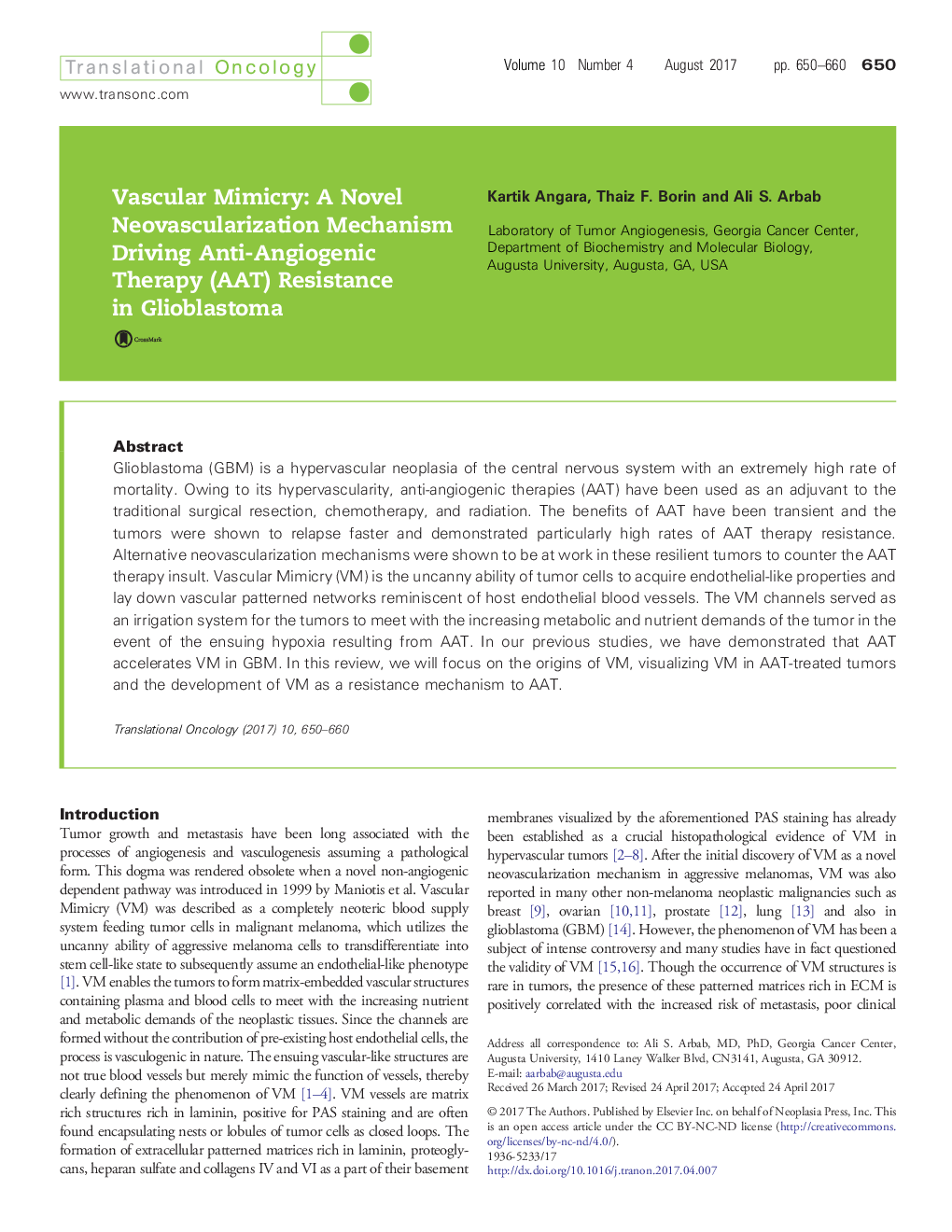| کد مقاله | کد نشریه | سال انتشار | مقاله انگلیسی | نسخه تمام متن |
|---|---|---|---|---|
| 5530081 | 1401715 | 2017 | 11 صفحه PDF | دانلود رایگان |

Glioblastoma (GBM) is a hypervascular neoplasia of the central nervous system with an extremely high rate of mortality. Owing to its hypervascularity, anti-angiogenic therapies (AAT) have been used as an adjuvant to the traditional surgical resection, chemotherapy, and radiation. The benefits of AAT have been transient and the tumors were shown to relapse faster and demonstrated particularly high rates of AAT therapy resistance. Alternative neovascularization mechanisms were shown to be at work in these resilient tumors to counter the AAT therapy insult. Vascular Mimicry (VM) is the uncanny ability of tumor cells to acquire endothelial-like properties and lay down vascular patterned networks reminiscent of host endothelial blood vessels. The VM channels served as an irrigation system for the tumors to meet with the increasing metabolic and nutrient demands of the tumor in the event of the ensuing hypoxia resulting from AAT. In our previous studies, we have demonstrated that AAT accelerates VM in GBM. In this review, we will focus on the origins of VM, visualizing VM in AAT-treated tumors and the development of VM as a resistance mechanism to AAT.
Journal: Translational Oncology - Volume 10, Issue 4, August 2017, Pages 650-660